The difference between Rough and Smooth Green Snakes is mostly in their size and appearance, but they alos differ in distribution and diet…
Last updated on February 10th, 2023 at 01:30 pm
Green Snakes are widespread in North America. For their part, Rough Green Snakes are popular pets, but Smooth Green Snakes are less often seen – and appear to be in decline in some regions. Whilst these species do look similar, they have real differences in their lifestyle (niche), diet, size, and distribution.
Smooth Green Snake vs Rough Green Snake
The first and most obvious difference between these two species is of course that one is rough, and the other is smooth. This is because Rough Green Snakes have keeled scales, meaning that they have a raised line (keel) down their centre.
Smooth Green Snakes are smooth scaled, meaning that their scales are without this keel. This difference in scale types is probably down to the differing habits of these snakes.
Smooth Green Snakes are pretty good climbers but tend be mostly terrestrial. In general, you’ll find them in open, grassy areas or in low shrubs and undergrowth. In this type of dense, low foliage, it’s best to be able to wriggle through the grass quickly to escape would-be predators.
For this purpose, smooth scales are great. Another example of a reptile that exploits a similar habitat and has very smooth scales is the European Slow Worm (Anguis fragilis).
Rough Green Snakes, on the other hand, are highly arboreal. They prefer to inhabit areas of dense trees or large shrubs bordering bodies of water. In fact, they even sleep high above the ground, which is their preferred way of staying safe from nocturnal predators.
For this niche, keeled scales may be better as they improve grip. That said, there’s no solid evidence that this is why this snake has them. Theories on the purpose of keeled vs smooth scales in snakes is regularly debated by herpetologists, so your guess is as good as ours!

Green Snake Scientific names
The Rough Green Snake’s binomial, or scientific name, is Opheodrys aestivus and Smooth Green Snake’s is Opheodrys vernalis. What you may notice about these names is that they share the same genus name, Opheodrys, which basically means tree snake in Greek. This is how you know that they are very closely related, despite being distinct species.
When it comes to the second parts of their names, these also have meanings. In Latin, “aestivus” roughly means “of the summer” and “vernalis” means “of the spring.” Not that this really helps you tell the two apart in the flesh…
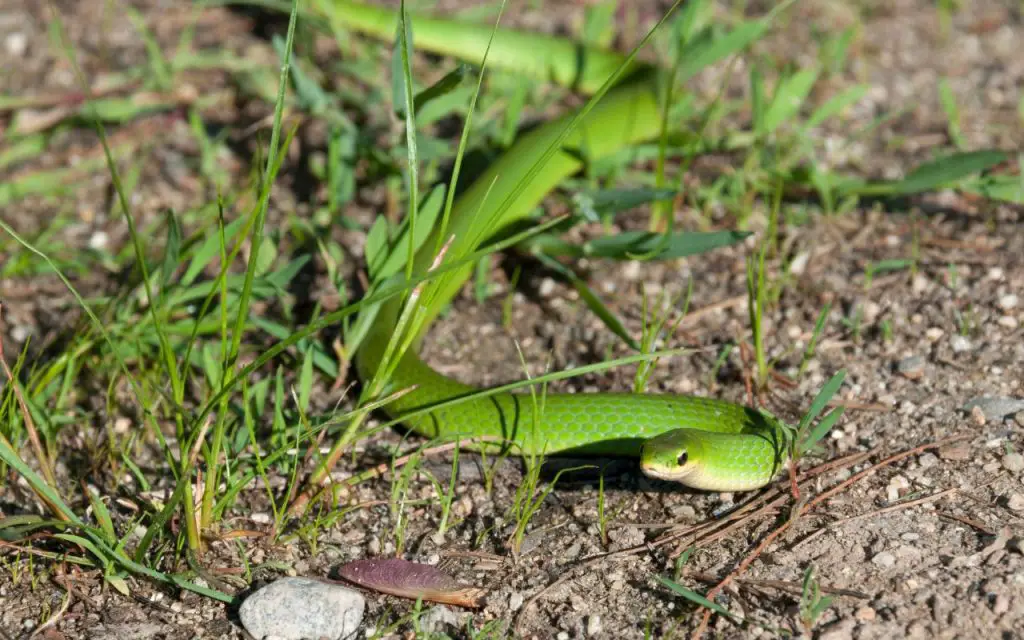
Size
When it comes to size, the Smooth Green Snake is by far the smaller of the two. Adult Smooth Greens usually max out at around 18-20 inches (45-50cm). Their hatchlings are tiny, sometimes as little as 3.5 inches (9cm).
Rough Green Snakes aren’t exactly huge themselves, averaging around 24 to 32 inches (60 to 81cm). Nonetheless, the hatchlings of this species are also tiny, at 6-8 inches (15-20cm).
Overall, it’s this small size that actually makes Rough Green Snakes cool pets: They’re highly arboreal but can still be housed in a three foot (90cm) tall enclosure. Add to this the fact that they are diurnal, and you can understand why they are so popular.
In both species, females are slightly larger than males. This is often the case with oviparous snakes.

Geographic distribution
Rough Green Snakes occupy all the warm, humid climate zones of the south-eastern US and extreme north-eastern Mexico. Anywhere where it’s warm most of the year and there is dense vegetation, this species is abundant. Nonetheless, given how they well camouflaged they, this abundance can be easily overlooked.
Smooth Green Snakes occupy an increasingly disjunct distribution area from West Virginia in the south, to Nova Scotia in the northeast and Saskatchewan in the northwest. As you can guess, these areas have cooler winters and often less dense vegetation.
To the west, this species has isolated populations as far south as New Mexico. In these areas it exploits prairie-type habitats and areas adjacent to water.
In a nutshell, Smooth Green Snakes replace Rough Greens everywhere where winters are harsh, and/or vegetation is low in height.
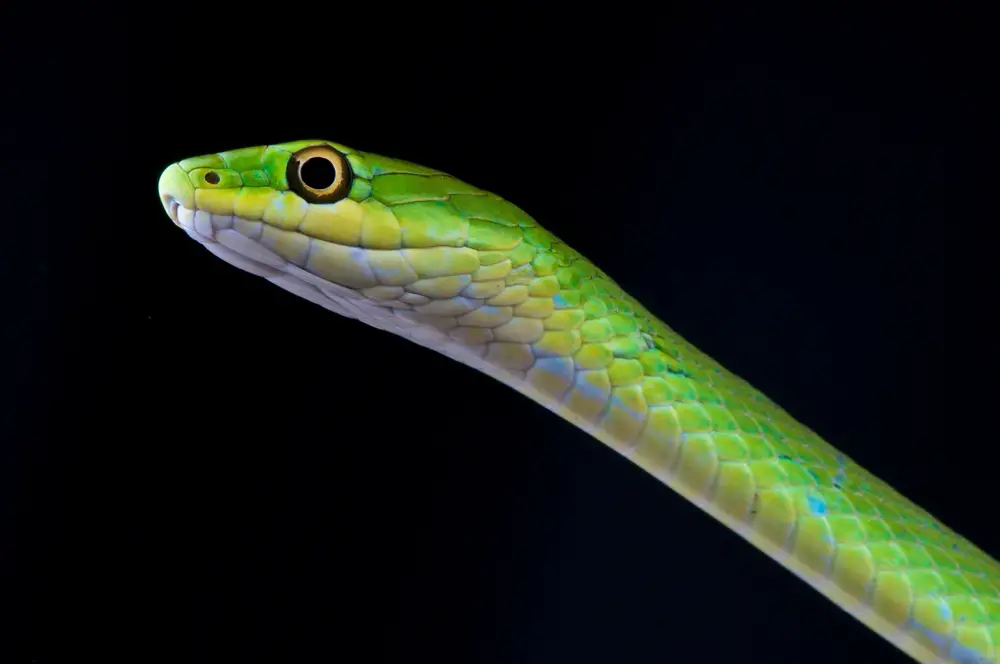
Brumation (hibernation)
By now, you probably know that reptiles don’t technically hibernate – hibernation is what mammals do. Reptiles enter a period of reduced activity called brumation, which can be a response to cold or even drought.
Given their southerly range, Rough Green Snakes often only brumate for two or three months. Smooth Green Snakes, on the other hand, can brumate for up to six months. Many herpetologists have also observed them brumating together, and sometimes in ant hills.
As they need to get either below the frost line or insulated from it to the survive winter, ant hills may be important for the Smooth Green Snake’s survival.
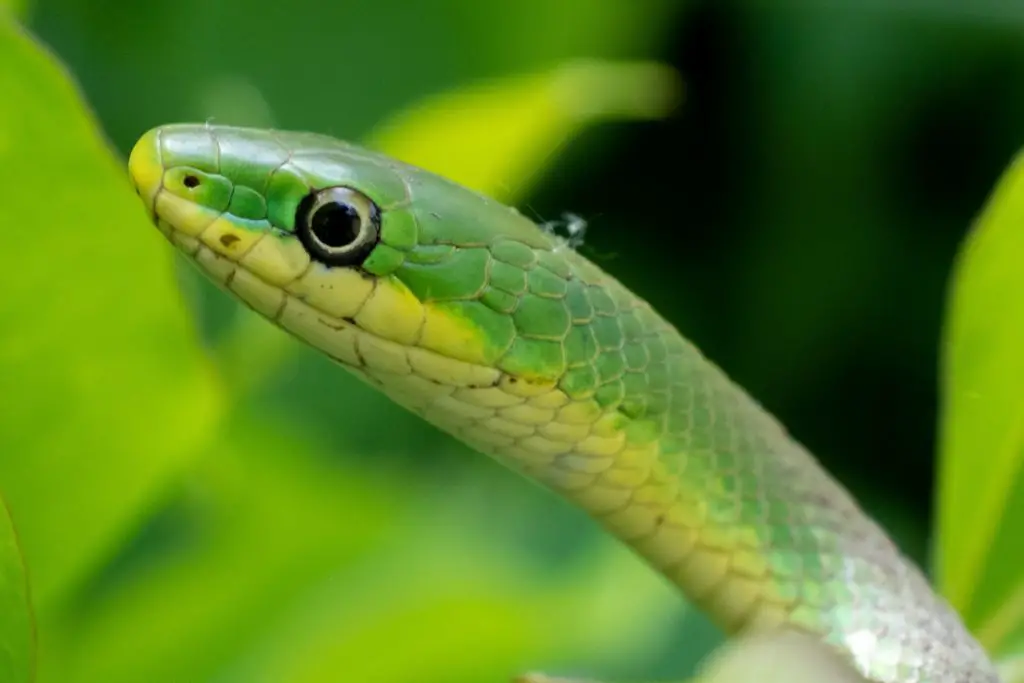
Reproduction
Individuals of both of these species can breed when they reach adult size, which usually takes about 24 months.
Smooth Green Snakes retain their eggs in their body until the embryos are well-developed. This strategy of late egg laying means that their clutches are less at risk from variable weather. Generally, these clutches contain up to about 2 to 6 eggs and hatch after around two weeks.
Rough Green Snakes have more favourable weather throughout their range and therefore a slightly different incubation strategy. They also lay around 6 eggs but are gravid for less time and this increases the incubation period to around a month.
What do Smooth Green Snakes eat?
Despite being fellow invertebrate predators, Smooth Green Snakes specialise in slightly smaller and more terrestrial prey. Overall, the bulk of their diet is made up of caterpillars, grubs, and spiders. This is partially different to Rough Greens, which also consume large numbers of crickets and grasshoppers.
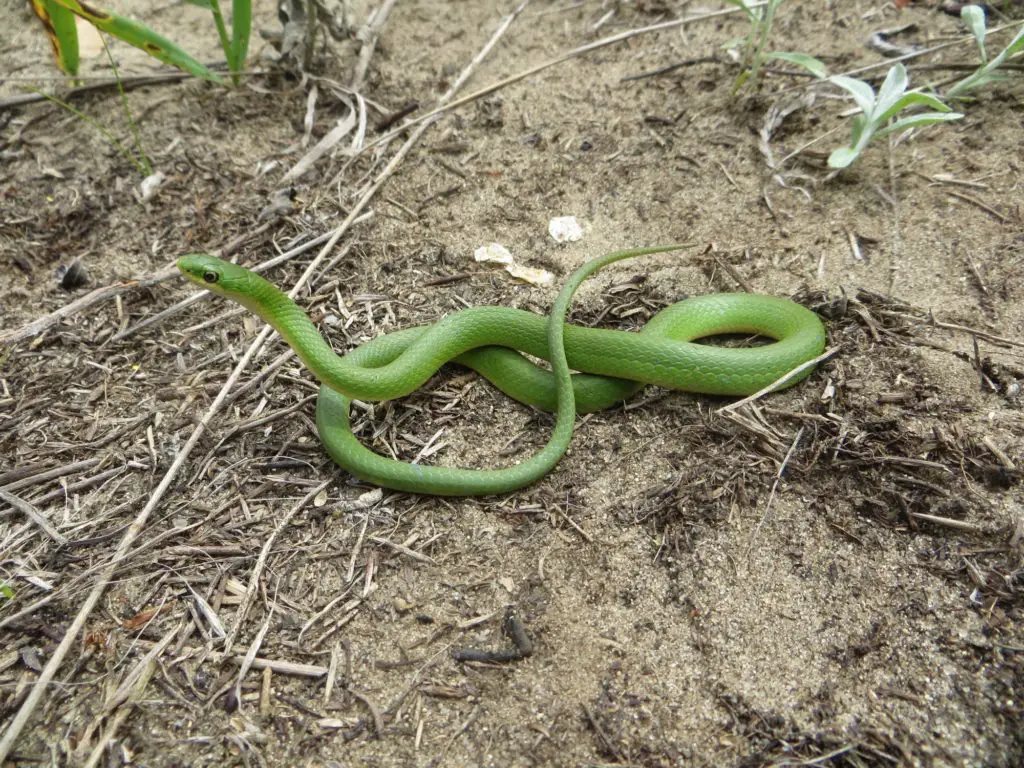
Smooth Green Snakes as a pet
When it comes to keeping Green Snakes as pets, Rough Greens are your best bet. It’s extremely hard to find captive Smooth Green Snakes, whereas Rough Greens are slowly becoming more available. If you do see Smooth Greens for sale, it is highly likely that they were wild caught.
There are many reasons to avoid wild-caught animals, not least because collecting them damages wild populations. With a species like this, which is in decline in parts of its range, it is particularly important to consider this factor.
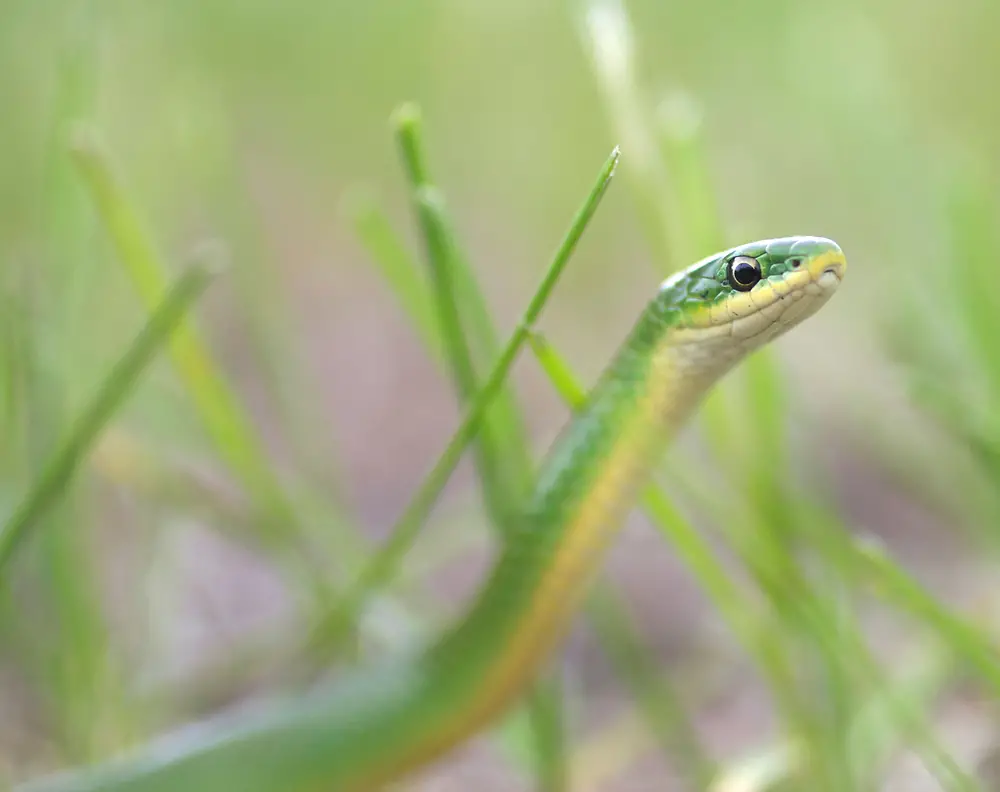
Summary
Turn your device to landscape if you have trouble seeing the whole table…
| Species | Rough Green Snake | Smooth Green Snake |
| Scientific name | Opheodrys aestivus | Opheodrys vernalis |
| Size | 24 to 32 inches (60 to 81cm) | 18-20 inches (45-50cm) |
| Scalation | Keeled | Smooth |
| Habitat | trees and tall shrubs near water | meadows and prairie |
| Prey | – caterpillars – grubs (larvae) – grasshopers/crickets – spiders | – caterpillars -grubs (larvae) – spiders |
